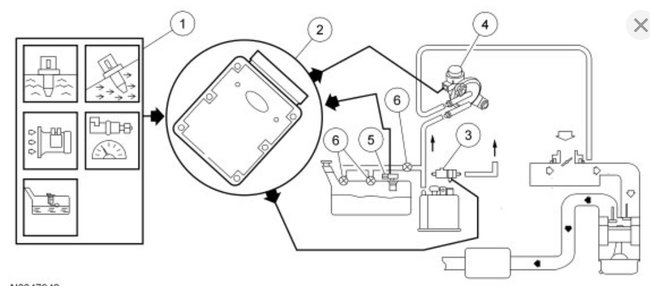Good morning,
The EVAP checks itself constantly. When it does, it produces a vacuum in the system and watches for a drop in this vacuum over time. If it drops then it will fail the test. After 3 failures, it will set a fault code.
When it passes, the monitor you see will say complete. That is required in most states for the Emissions test.
Part of the test, the fuel level needs to be between 1/4 and 3/4 of a tank of fuel for the test.
Roy
Evaporative Emission (EVAP) Systems
Overview
The EVAP system prevents fuel vapor build-up in the sealed fuel tank. Fuel vapors trapped in the sealed tank are vented through the vapor valve assembly on top of the tank. The vapors leave the valve assembly through a single vapor line and continue to the EVAP canister for storage until the vapors are purged to the engine for burning.
All applications required to meet on board diagnostics (OBD) regulations use the enhanced EVAP system. Some applications also incorporate an on-board refueling vapor recovery (ORVR) system. Refer to Evaporative Emissions System, for vehicle specific information.
Enhanced Evaporative Emission (EVAP) System
The enhanced EVAP system consists of a fuel tank, fuel filler cap, fuel tank mounted or in-line fuel vapor control valve, fuel vapor vent valve, EVAP canister, fuel tank mounted or fuel pump mounted or in-line fuel tank pressure (FTP) sensor, EVAP canister purge valve or vapor management valve (VMV), intake manifold hose assembly, EVAP canister vent (CV) solenoid, powertrain control module (PCM) and connecting wires, and fuel vapor hoses. For additional information on the EVAP system components, refer to Engine Control Components See: Computers and Control Systems > Diagnostic Trouble Code Tests and Associated Procedures > Engine Control Components.
1. The enhanced EVAP system uses inputs from the engine coolant temperature (ECT) sensor or cylinder head temperature (CHT) sensor, the intake air temperature (IAT) sensor, the mass air flow (MAF) sensor, the vehicle speed and the FTP sensor to provide information about engine operating conditions to the PCM. The fuel level input (FLI) and FTP sensor signals to the PCM are used by the PCM to determine activation of the EVAP leak check monitor based on the presence of vapor generation or fuel sloshing.
2. The PCM determines the desired amount of purge vapor flow to the intake manifold for a given engine condition. The PCM can then output the required signal to the EVAP canister purge valve or VMV. The PCM uses the enhanced EVAP system inputs to evacuate the system using the EVAP canister purge valve or VMV, seals the enhanced EVAP system from the atmosphere using the CV solenoid, and uses the FTP sensor to observe total vacuum lost for a period of time.
3. The CV solenoid seals the enhanced EVAP system to atmosphere during the EVAP leak check monitor.
4. The PCM outputs a variable current (between 0 mA and 1,000 mA) to the solenoid on the EVAP canister purge valve or VMV.
5. The FTP sensor monitors the fuel tank pressure during engine operation and continuously transmits an input signal to the PCM. During the EVAP monitor testing, the FTP sensor monitors the fuel tank pressure or vacuum bleed-up.
6. The fuel tank mounted fuel vapor vent valve assembly and the fuel tank mounted fuel vapor control valve (or remote fuel vapor control valve) are used in the enhanced EVAP system to control the flow of fuel vapor entering the engine. All of these valves also prevent fuel tank overfilling during refueling operation and prevent liquid fuel from entering the EVAP canister and the EVAP canister purge valve or VMV under any vehicle altitude, handling, or rollover condition.
7. The enhanced EVAP system, including all the fuel vapor hoses, can be checked when a leak is detected by the PCM. Refer to Evaporative Emissions System for information on leak detection tools and procedures.
Image (Click to make bigger)
Saturday, January 11th, 2020 AT 3:53 AM




